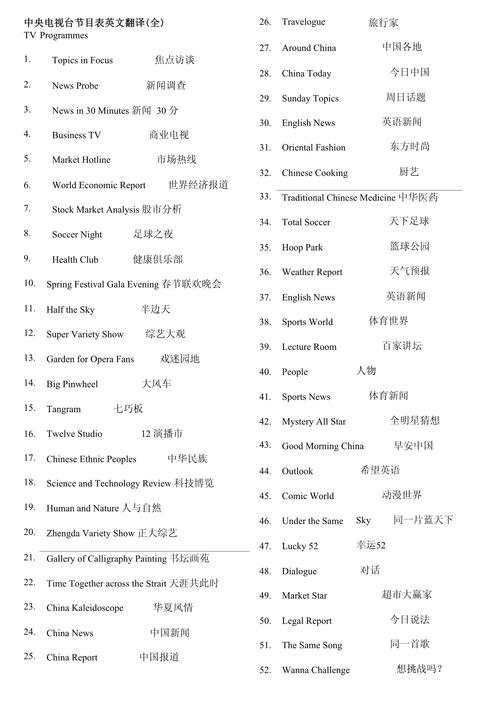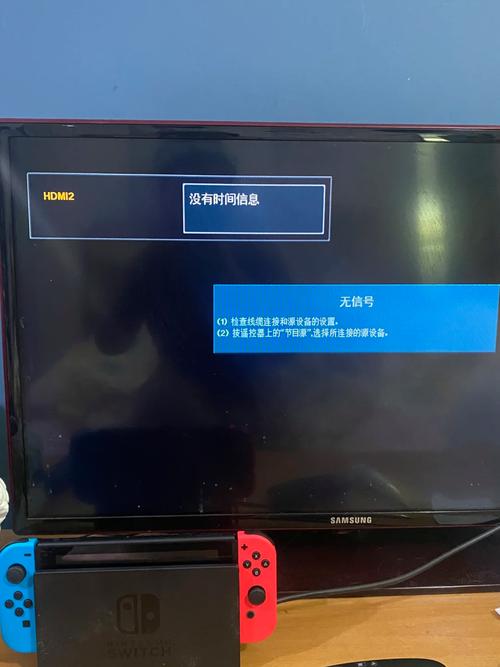电视机故障英语,你知道怎么说吗?
电视机故障英语
Televisions have become an integral part of our daily lives, providing entertainment, news, and a means to connect with the world. However, like any electronic device, televisions can encounter various issues over time. Understanding these common problems in English can help you communicate effectively with technicians or when seeking advice online. Below is a comprehensive guide to some frequent television faults, their possible causes, and potential solutions presented in table format for clarity.

| Fault Symptom | Possible Causes | Solutions |
| No Power or Won't Turn On | Power outage or loose power cord connection Faulty power supply or internal fuse Damaged power socket on the TV | Check if the power outlet is functioning; try another device Ensure the power cord is securely plugged in If other devices work, consider professional repair for internal issues |
| Screen Remains Black or Blank | Incorrect input source selected Loose HDMI/AV cable connections Display panel failure | Verify the correct input is chosen using the remote control Check and tighten all cable connections If cables are fine, professional diagnosis may be needed for the display issue |
| Poor Picture Quality (e.g., Blurry, Low Resolution) | Incorrect picture settings (resolution, mode, etc.) Weak signal reception (for antenna/cable TV) Outdated firmware or software | Adjust the picture settings to match your content source (e.g., set to HD for highdefinition channels) Check signal strength and reposition antenna if necessary Update the TV's firmware/software via its settings menu |
| Sound Issues (No Sound, Low Volume, Distorted Sound) | Mute button activated or volume set too low Faulty audio output settings Internal speaker damage or connectivity problem | Press the mute button or increase the volume using the remote Check audio settings and ensure external speakers are properly connected if used For persistent issues, consult a professional for speaker inspection or replacement |
| Flickering Screen or Unusual Colors | Loose or damaged video cables (HDMI, AV, etc.) Incompatible content or signal type Display hardware malfunction | Securely connect all video cables and try a different one if available Verify the content being played is supported by the TV (e.g., not playing 4K content on a non4K TV) Persistent flickering may require professional attention for hardware repair |
| Freezing or Stuttering During Playback | Slow internet connection for streaming services Overheating of the TV due to poor ventilation Insufficient processing power for the content being played | Check internet speed and stability; consider rebooting your router Ensure adequate airflow around the TV; avoid placing it in enclosed spaces Lower the resolution or bitrate of the content if possible, or upgrade your TV model |
| Unresponsive Remote Control | Dead batteries in the remote Line of sight obstruction between remote and TV sensor Remote control pairing issue after battery replacement or other interference | Replace the remote's batteries and test again Clear any obstacles blocking the remote's signal path to the TV Follow the TV's manual instructions to repair the remote with the TV if necessary |
Remember, while this guide covers many common television faults and their remedies, complex issues might still require the expertise of a certified technician. Always prioritize safety by disconnecting the TV from power sources before attempting any internal checks or repairs yourself.
FAQs

Q1: My TV turns on but there's no sound. What should I do first?
A1: Start by checking if the TV is muted or if the volume is set too low. Use the remote control to unmute the TV and gradually increase the volume. If that doesn't work, check the audio settings to ensure the correct output source is selected (e.g., external speakers vs. internal). If using external speakers, make sure they are properly connected. As a last resort, try restarting the TV or consulting the user manual for further troubleshooting steps related to sound issues.
Q2: Can a faulty HDMI cable cause my TV screen to remain black even though the TV is powered on?
A2: Yes, a faulty or improperly connected HDMI cable can indeed result in a black screen, especially if the TV is set to receive input from that specific HDMI port. To troubleshoot, first, ensure the HDMI cable is securely plugged into both the TV and the source device (e.g., Bluray player, gaming console). Try using a different HDMI cable if available to rule out cable damage. Also, verify that the TV is set to the correct input source corresponding to the HDMI port being used. If the problem persists after these checks, the issue may lie with the TV's HDMI port or the source device itself, requiring further investigation or professional assistance.
◎欢迎您留言咨询,请在这里提交您想咨询的内容。
留言评论